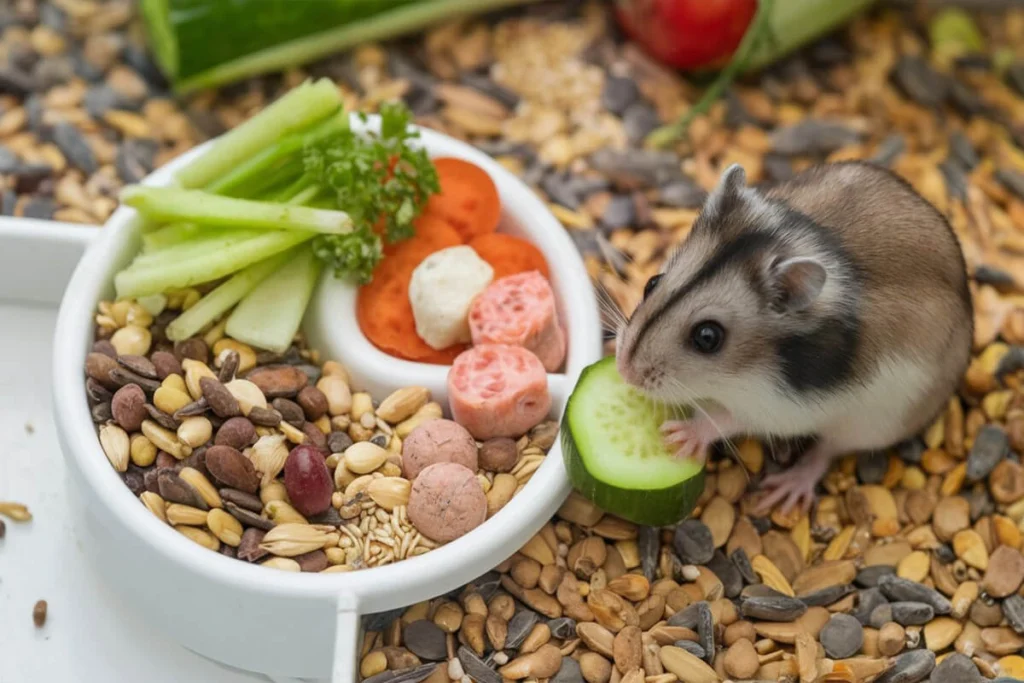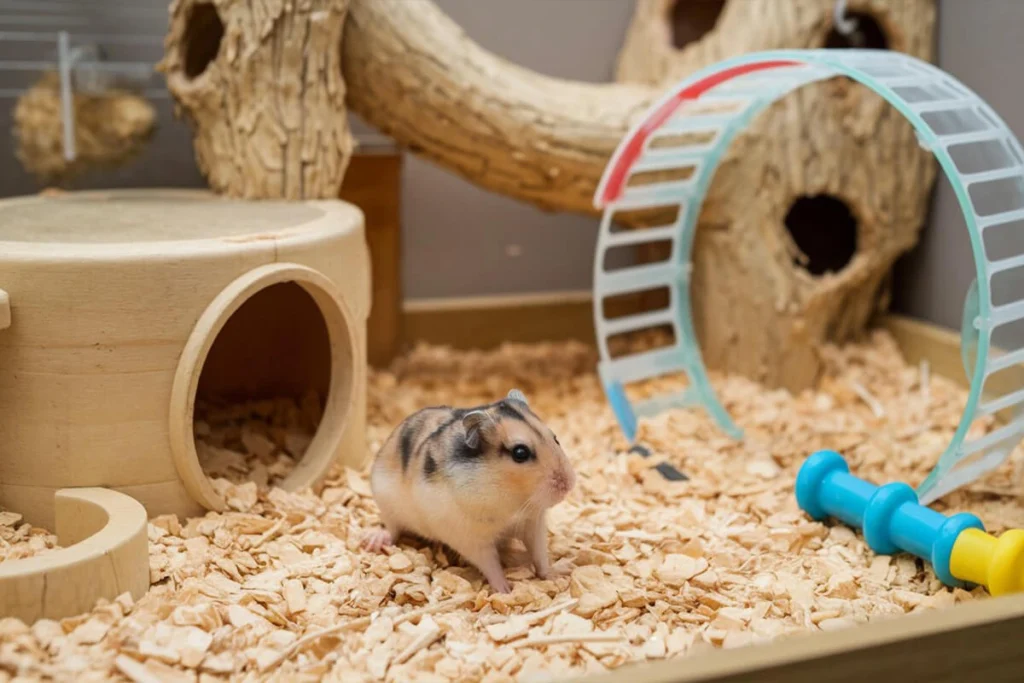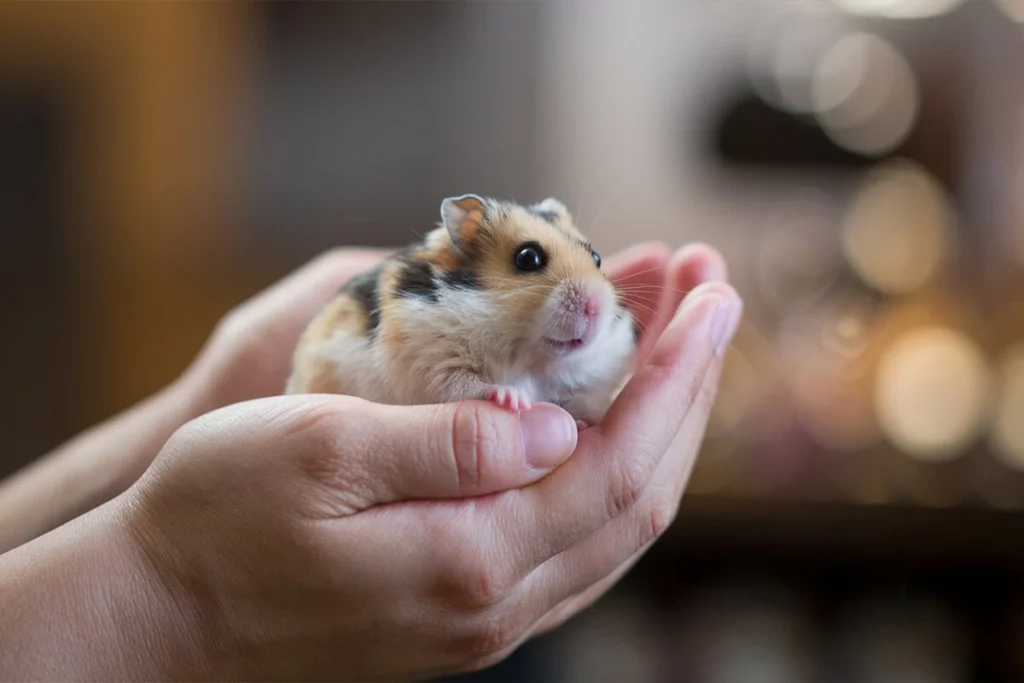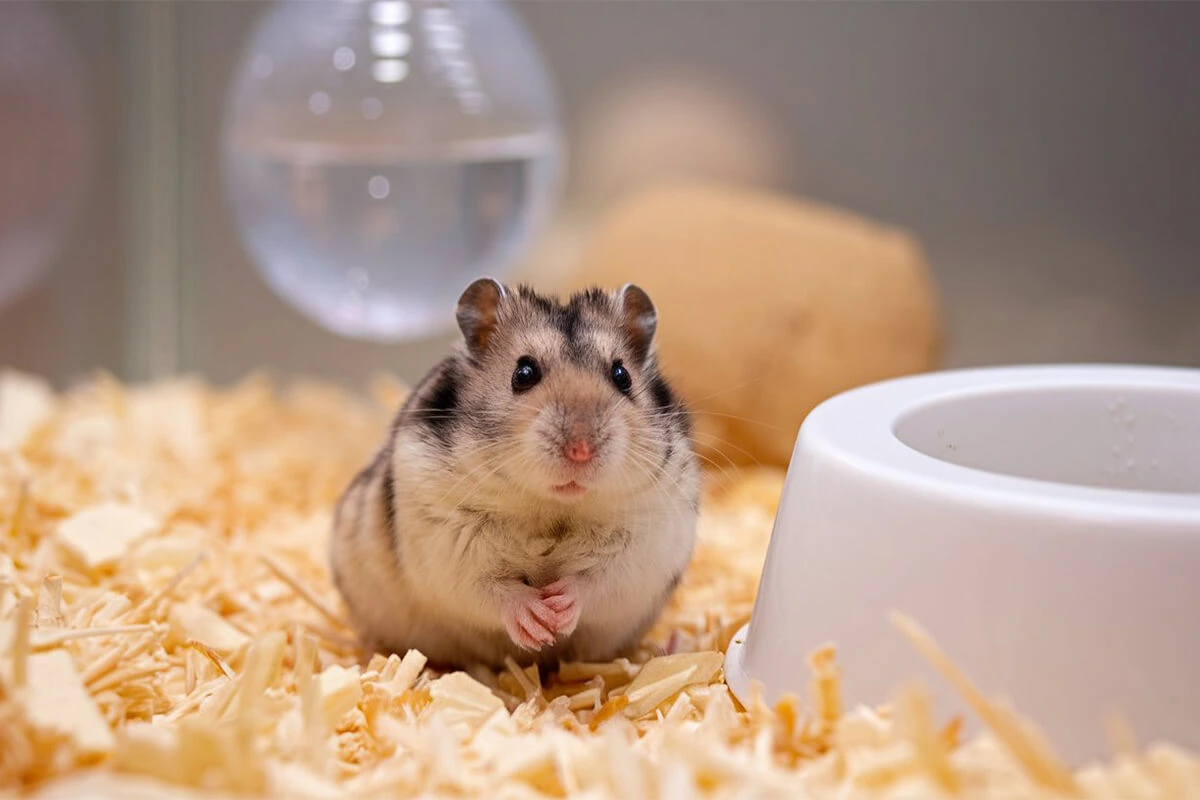Chinese dwarf hamsters have a relatively short but rewarding lifespan, and providing the right care can help them live longer, healthier lives. On average, the Chinese dwarf hamster lifespan ranges from 2 to 3 years, but with proper nutrition, a clean habitat, and regular enrichment, some may live even longer. Every small detail in their daily routine plays a role in their overall well-being, making responsible care essential.
These tiny rodents may be small, but they require just as much attention as larger pets. Their diet, exercise, and environment directly affect their longevity, so understanding their needs can significantly impact their lifespan. A well-balanced diet, a spacious and properly equipped cage, and consistent veterinary checkups all contribute to their health. Pet owners who prioritize these factors can ensure their hamster thrives, showing active and curious behavior throughout its life.
In this guide, you’ll learn expert tips to extend your Chinese dwarf hamster’s lifespan by focusing on key areas such as diet, habitat setup, exercise, and health monitoring. By making a few simple but effective changes, you can create the best possible life for your furry companion.
Key Factors Affecting Chinese Dwarf Hamster Lifespan
Genetics and Natural Lifespan Expectations
Every Chinese dwarf hamster has a natural lifespan that depends on genetics. Most live between 2 to 3 years, but some may reach 3.5 years with exceptional care. Genetics influence their overall health, susceptibility to diseases, and aging speed. While you can’t change genetic factors, you can create the best conditions to help your hamster reach the upper end of its lifespan. Breeding history also plays a role. Hamsters from responsible breeders with strong, healthy lineage often have fewer health problems compared to those from pet stores, where breeding conditions may not prioritize longevity.
Impact of Diet, Exercise, and Environment on Longevity
Diet, exercise, and habitat quality directly affect the Chinese dwarf hamster lifespan. A well-balanced diet ensures strong immunity, steady weight, and proper organ function. Fresh vegetables, high-quality hamster pellets, and occasional protein sources like mealworms or boiled eggs support long-term health. Avoid sugary treats and fatty foods, as these can lead to obesity and diabetes, which shorten a hamster’s life.
Exercise keeps your hamster active and prevents obesity-related health issues. A properly sized hamster wheel and toys encourage natural running behavior, which strengthens muscles and improves heart health. Adding tunnels, climbing structures, and chew toys keeps their minds engaged and reduces boredom. A sedentary lifestyle can cause weight gain, muscle weakness, and increased stress, all of which negatively affect lifespan.
A clean and well-maintained habitat creates a healthy living environment. Choose a spacious hamster cage setup with ample ventilation, secure bedding, and proper hiding spots. Use hamster-safe bedding like paper-based or aspen shavings to prevent respiratory problems. Clean the cage regularly to remove waste and uneaten food, keeping bacteria and odors under control. A hygienic and comfortable habitat reduces health risks and helps your hamster feel secure.
Importance of Reducing Stress and Providing a Stable Habitat
Stress weakens the immune system and shortens the Chinese dwarf hamster lifespan. Frequent loud noises, excessive handling, or sudden changes in their environment can make them anxious. A stressed hamster may hide more, become aggressive, or show signs of illness. Creating a calm, predictable routine helps them feel secure.
A stable habitat plays a crucial role in minimizing stress. Keep the cage in a quiet area away from direct sunlight, loud TVs, or other pets like cats and dogs. Provide enough bedding and hideouts so your hamster feels safe. Handle them gently and at consistent times to build trust. Avoid sudden changes in diet or cage setup, as these can disrupt their sense of security.
By focusing on genetics, proper care, and a stress-free environment, you can maximize your Chinese dwarf hamster’s lifespan and ensure they live a happy, healthy life.
Optimal Diet for a Longer, Healthier Life
Best Food for Chinese Dwarf Hamsters
Providing the right diet plays a huge role in maximizing the Chinese dwarf hamster lifespan. A well-balanced diet strengthens the immune system, supports organ function, and keeps energy levels high. Chinese dwarf hamsters thrive on high-quality commercial hamster food that includes a mix of seeds, grains, dried vegetables, and protein sources. Pelleted food works well because it ensures a balanced intake of essential nutrients without selective eating.

Fresh vegetables and occasional fruits add important vitamins and minerals. Leafy greens like kale, spinach, and romaine lettuce provide fiber and antioxidants. Carrots, cucumbers, and bell peppers serve as hydrating, vitamin-rich treats. Small portions of fruits like apples or blueberries add natural sweetness but should only be offered occasionally due to their sugar content.
Protein sources like mealworms, boiled eggs, or plain cooked chicken help maintain muscle strength and promote a healthy coat. Since Chinese dwarf hamsters have a higher risk of developing diabetes, pet owners should avoid sugary and processed foods while focusing on a diet rich in fiber and lean protein.
Safe vs. Unsafe Foods
Not all foods benefit a Chinese dwarf hamster’s lifespan. Some common household foods pose serious health risks. Safe foods include:
- Vegetables: Broccoli, carrots, cucumbers, zucchini, and leafy greens
- Fruits (in moderation): Apples (without seeds), pears, blueberries, and strawberries
- Proteins: Cooked chicken, boiled eggs, mealworms, and plain tofu
- Grains & Seeds: Plain oats, millet, flaxseeds, and quinoa
Unsafe foods can cause digestive issues, poisoning, or long-term health complications. Never feed your hamster:
- Sugary or processed foods: Chocolate, candy, bread, or sugary cereals
- Toxic fruits and vegetables: Onions, garlic, leeks, raw potatoes, and citrus fruits
- Nuts and seeds high in fat: Almonds, walnuts, and sunflower seeds (in excess)
- Dairy products: Cheese, milk, and yogurt, which can cause digestive upset
Carefully selecting safe foods and avoiding harmful ones helps prevent obesity, diabetes, and other diet-related illnesses, ensuring a longer, healthier life.
Importance of Fresh Water and Vitamin Supplements
Clean, fresh water plays a vital role in maintaining a Chinese dwarf hamster’s lifespan. Dehydration leads to lethargy, digestive problems, and kidney issues. Always provide water in a bottle with a sipper tube to keep it clean and free from contamination. Check daily to ensure the bottle functions properly and replace the water every 24 hours.
Vitamin supplements can help fill nutritional gaps, especially for hamsters with health conditions or unbalanced diets. A veterinarian may recommend calcium or vitamin D supplements to support bone health, especially for aging hamsters. Omega-3 fatty acids, found in flaxseeds and certain supplements, promote heart health and a shiny coat. However, a well-balanced diet should provide most of the necessary nutrients without excessive supplementation.
By offering a nutritious diet, selecting safe foods, and ensuring proper hydration, pet owners can extend their Chinese dwarf hamster’s lifespan and support a long, active, and healthy life.
Proper Cage Setup and Enrichment
Choosing the Right Hamster Cage Setup
A well-designed hamster cage setup plays a crucial role in extending the Chinese dwarf hamster lifespan. The right cage provides enough space for exercise, enrichment, and comfortable nesting areas. Chinese dwarf hamsters feel safer in enclosures with plenty of hiding spots and burrowing space. A minimum cage size of 450 square inches of floor space works best, but larger cages allow more movement and exploration.

Wire cages with solid bottoms, glass tanks, and bin cages all make good choices. Wire cages provide excellent ventilation but need closely spaced bars (no more than ½ inch apart) to prevent escape. Glass tanks offer a secure, chew-proof option but require frequent cleaning to maintain airflow. Bin cages, made from modified plastic storage containers, provide a budget-friendly and customizable solution.
The cage must include multiple levels, tunnels, and hideouts to encourage natural behaviors. Placing the setup in a quiet, stable environment away from direct sunlight, loud noises, and temperature fluctuations helps reduce stress and keeps your hamster comfortable. A well-maintained and properly designed habitat creates a sense of security, directly impacting health and longevity.
Hamster-Safe Bedding Options and Why They Matter
The right hamster-safe bedding ensures comfort, absorbs waste, and reduces respiratory issues. Paper-based bedding, aspen shavings, and hemp bedding provide the best options. Paper bedding works well because it’s soft, dust-free, and excellent at controlling odor. Aspen shavings offer a natural, low-dust alternative, while hemp bedding provides great absorbency and minimal allergens.
Some bedding materials create serious health risks. Avoid pine and cedar shavings because they release aromatic oils that cause respiratory problems. Cotton fluff bedding also poses a danger, as it can wrap around limbs, causing injuries or blockages if ingested. Instead, shredded unscented toilet paper or plain paper towels can serve as temporary, safe alternatives.
Chinese dwarf hamsters love to burrow, so a bedding depth of at least 4 to 6 inches allows them to create tunnels and nest comfortably. Deep bedding promotes natural digging behaviors, provides warmth, and reduces stress, contributing to a longer Chinese dwarf hamster lifespan.
Hamster Wheel and Toys for Exercise and Mental Stimulation
Exercise and enrichment directly impact a Chinese dwarf hamster’s lifespan by preventing obesity and keeping their minds engaged. A properly sized hamster wheel allows for natural running behavior, preventing muscle loss and improving cardiovascular health. Choose a solid-surface wheel with a diameter of 6.5 inches or larger to prevent back strain. Avoid wire or mesh wheels, as they can cause foot injuries.
Toys and tunnels provide essential mental stimulation. Chew toys help keep teeth healthy and prevent overgrowth. Wooden toys, pumice stones, and loofah chews satisfy their natural gnawing instinct. Tunnels and hideouts encourage exploration and create a more engaging environment. Adding cardboard tubes, climbing structures, and digging boxes promotes problem-solving and keeps boredom away.
Rotating toys and rearranging cage accessories every few weeks keeps things interesting for your hamster. A mentally and physically stimulated hamster stays active, reducing stress and leading to a longer, healthier life.
By setting up the perfect hamster cage, choosing hamster-safe bedding, and providing a hamster wheel and engaging toys, you can create an environment that supports an extended Chinese dwarf hamster lifespan while keeping your pet happy and healthy.
Common Health Issues and Signs of Aging
Common Health Issues in Hamsters
Chinese dwarf hamsters often face several health problems that can shorten their lifespan if left untreated. Understanding these issues early helps prevent complications and improves overall well-being. Some of the most common health concerns include:
- Diabetes – Chinese dwarf hamsters have a genetic predisposition to diabetes. High-sugar diets and obesity increase the risk. Symptoms include excessive thirst, frequent urination, weight loss, and lethargy. Feeding a low-sugar, high-fiber diet helps prevent this condition.
- Respiratory Infections – Cold temperatures, poor ventilation, and dusty bedding can cause respiratory illnesses. Wheezing, labored breathing, nasal discharge, and sneezing indicate an infection. Keeping the cage clean and free from drafts reduces respiratory risks.
- Wet Tail – This bacterial infection causes severe diarrhea, dehydration, and lethargy. Stress, poor diet, and dirty cages contribute to wet tail. A hamster suffering from wet tail needs immediate veterinary treatment, as this condition progresses quickly.
- Skin Issues and Mites – Patchy fur loss, excessive scratching, and red, irritated skin may signal mites or fungal infections. Using safe bedding, cleaning the cage regularly, and avoiding overcrowded conditions lower the chances of infestation.
- Overgrown Teeth – Hamsters’ teeth grow continuously, so they need chew toys to wear them down. Overgrown teeth lead to eating difficulties, drooling, and weight loss. Providing safe wooden chew toys and a proper diet prevents this issue.
Monitoring your hamster for these common illnesses helps catch problems early. Taking preventative measures ensures a longer, healthier Chinese dwarf hamster lifespan.
Signs of Aging in Hamsters
As Chinese dwarf hamsters grow older, they show clear signs of aging. Recognizing these changes allows pet owners to adjust care routines and keep their hamster comfortable during their senior years. Some noticeable signs of aging include:
- Reduced Activity Levels – Older hamsters slow down and spend more time sleeping. They may use their hamster wheel less frequently and explore their cage less often.
- Weight Changes – Some aging hamsters lose weight due to muscle loss, while others gain weight due to reduced activity. Monitoring diet and exercise helps maintain a healthy balance.
- Thinning Fur and Skin Changes – Fur may appear thinner or patchy, and skin can become more sensitive. Providing soft, hamster-safe bedding prevents irritation.
- Decreased Appetite – Senior hamsters sometimes eat less, making it important to offer nutrient-rich foods that are easy to chew. Soaking pellets in water or offering small portions of soft foods like cooked vegetables helps with digestion.
- Weaker Grip and Mobility Issues – Arthritis or muscle weakness can make climbing and running difficult. Lowering food bowls, adding ramps, and using softer bedding improve comfort and accessibility.
Adjusting care to meet the needs of an aging hamster ensures they remain happy and comfortable throughout their golden years.
When to Seek Veterinary Care for Small Pets
Timely veterinary care extends a Chinese dwarf hamster’s lifespan by addressing health issues before they become serious. Hamsters instinctively hide illnesses, so recognizing subtle signs of distress helps catch problems early. Seek veterinary attention if you notice:

- Sudden Weight Loss or Gain – Rapid changes in weight may indicate diabetes, tumors, or digestive issues.
- Difficulty Breathing – Labored breathing, wheezing, or nasal discharge signals a respiratory infection that requires immediate treatment.
- Lethargy or Lack of Appetite – If your hamster refuses food, avoids movement, or sleeps excessively, they may suffer from an underlying illness.
- Diarrhea or Wet Tail Symptoms – Persistent diarrhea, a wet or matted tail, and a foul odor require urgent veterinary care.
- Lumps, Swelling, or Abnormal Growths – Any unusual bumps or persistent swelling could indicate tumors or abscesses that need medical evaluation.
- Excessive Scratching or Fur Loss – Bald patches, irritated skin, or excessive itching suggest mites, allergies, or skin infections.
Regular health checkups help catch hidden problems, especially in aging hamsters. Finding an experienced small-pet veterinarian ensures quick and effective treatment when health concerns arise.
By monitoring for common health issues in hamsters, recognizing signs of aging, and seeking timely veterinary care for small pets, you can provide the best care possible and help extend your Chinese dwarf hamster’s lifespan.
Daily Care and Best Practices to Extend Lifespan
Maintaining Hygiene and Clean Living Conditions
Keeping a clean habitat plays a major role in extending the Chinese dwarf hamster lifespan. A dirty cage leads to bacteria buildup, unpleasant odors, and an increased risk of respiratory infections, skin problems, and digestive issues. Cleaning the enclosure regularly ensures a safe and comfortable environment for your hamster.
Follow a cleaning schedule to maintain hygiene without causing stress:

- Daily Maintenance – Remove uneaten food, wipe down the water bottle spout, and spot-clean soiled bedding areas to control odors and prevent bacteria growth.
- Weekly Cleaning – Replace a portion (around 30-50%) of the bedding to maintain freshness while keeping familiar scents intact. Clean the food bowl and water bottle with warm, soapy water and rinse thoroughly.
- Monthly Deep Cleaning – Wash the entire cage, including tunnels, hideouts, and toys, using pet-safe disinfectants or mild soap. Dry everything completely before placing it back to avoid mold growth.
Choose hamster-safe bedding like paper-based or aspen shavings to absorb moisture and control odors. Avoid scented bedding, as strong artificial fragrances can irritate their sensitive respiratory system. Provide a sand bath to help your hamster clean its fur naturally, reducing the risk of skin infections.
A clean, well-maintained cage lowers stress, prevents illness, and contributes to a longer, healthier life for your Chinese dwarf hamster.
Handling and Socialization Tips to Reduce Stress
Proper handling and gentle socialization help build trust, reduce stress, and create a strong bond with your hamster. Since stress weakens the immune system and negatively affects the Chinese dwarf hamster lifespan, using the right approach ensures a calm and happy pet.
Follow these steps to handle and socialize your hamster effectively:
- Let Your Hamster Adjust – When bringing a new hamster home, allow a few days for them to settle into their cage before handling them. Talk softly near the cage so they get used to your voice.
- Approach Slowly and Gently – Move your hand slowly into the cage, letting your hamster sniff it before attempting to pick them up. Sudden movements can startle them.
- Use a Cup or Tunnel at First – If your hamster feels nervous, encourage them to walk into a small cup or tunnel before transitioning to handling them with your hands.
- Hold with Care – Support their entire body while holding them. Keep your hands low to the ground or over a soft surface in case they jump. Never grab them from above, as this mimics predator behavior and triggers fear.
- Limit Handling Time – Start with short handling sessions of a few minutes and gradually increase as they become more comfortable.
Spending time interacting daily helps build trust and keeps your hamster social and happy. A well-socialized hamster feels more secure, reducing stress-related illnesses and extending its lifespan.
Monitoring for Any Changes in Behavior or Appetite
Sudden changes in behavior or eating habits often signal underlying health issues. Since hamsters instinctively hide signs of illness, staying observant ensures early detection and treatment. Paying attention to their daily routines and eating patterns helps prevent serious health problems.
Watch for these warning signs:
- Reduced Activity – If your hamster suddenly stops using its wheel, exploring its cage, or responding to interaction, it may feel unwell or stressed.
- Loss of Appetite – A hamster that refuses food, ignores treats, or loses weight could have dental issues, digestive problems, or illness.
- Increased Aggression or Hiding – A normally friendly hamster that starts biting, acting defensive, or hiding more than usual may feel unwell or stressed by environmental changes.
- Unusual Grooming or Scratching – Excessive grooming, fur loss, or scratching can indicate mites, skin infections, or allergies.
- Changes in Droppings or Urination – Diarrhea, constipation, or excessive urination may signal digestive disorders or diabetes, which require immediate attention.
Perform daily check-ins by observing how much your hamster eats, drinks, and moves around. Keep an eye on their weight by gently handling them and feeling for any sudden changes. If you notice persistent symptoms, consult a small-animal veterinarian as soon as possible.
By maintaining hygiene and clean living conditions, practicing proper handling and socialization, and monitoring behavior and appetite changes, you can prevent illness, reduce stress, and extend the Chinese dwarf hamster lifespan, ensuring a happy and healthy pet.
Conclusion
Caring for a Chinese dwarf hamster requires attention to several key factors, all of which contribute to a longer, healthier life. Understanding their lifespan factors, including genetics, diet, exercise, and environment, allows pet owners to take proactive steps in providing the best care possible. A nutritious diet, free from excessive sugars and harmful foods, supports strong immune function and prevents common illnesses like diabetes. Access to fresh water and essential vitamins ensures optimal health and hydration.
Creating a safe and stimulating habitat plays a crucial role in longevity. A properly sized cage with hamster-safe bedding, tunnels, and hiding spots reduces stress while encouraging natural behaviors like burrowing and exploring. Exercise through a hamster wheel and engaging toys keeps hamsters physically active and mentally stimulated, preventing obesity and boredom-related stress.
Recognizing common health issues and signs of aging allows for early intervention and appropriate care adjustments. Regular monitoring of behavior, appetite, and weight helps detect underlying health concerns before they become serious. Veterinary check-ups, along with timely treatment, significantly improve a hamster’s quality of life. Maintaining hygiene through regular cage cleaning and proper bedding choices minimizes the risk of infections and respiratory issues.
Socialization and gentle handling strengthen the bond between owner and hamster, reducing anxiety and making interactions more enjoyable. Respecting their natural instincts, handling them correctly, and keeping their environment stable ensures they feel safe and secure.
By prioritizing proper diet, habitat, exercise, hygiene, and healthcare, pet owners can significantly extend the Chinese dwarf hamster lifespan. With the right care, these small but intelligent pets can thrive, staying happy and healthy for as long as possible. Providing a stress-free, enriching environment allows them to live a fulfilling and active life.
Learn More About the Chinese Dwarf Hamster Here.
Pick The Best Name For your Lovely Hamster from our Top 100 Names HERE!
Read More about Furry Pets From HERE!
Discover Some Good stuff for your Pet On Pet MD Official
